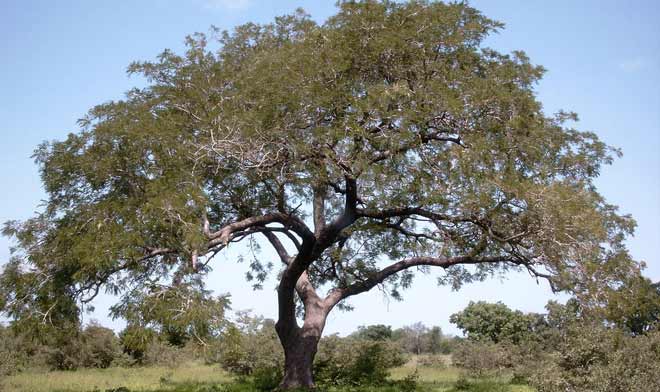The name may suggest otherwise, but the locust bean, or Parkia biglobosa, is, in fact, a tree that is native to West Africa. The locust bean tree can grow to more than 20 meters in height. It originates in latitudes between 5 degrees North and 15 degrees North. The trees can grow with little water and survive in dry soil, extended exposure to the sun, and in tropical climates. The tall trees and abundant leaves create large crowns that can provide shade. When the leaves fall, the deteriorating leaves add nitrogen and minerals to the soil, thus improving the land and making it more fertile. In some areas of Africa, the locust bean tree provides foliage and good soil for growing the grain fonio.
A distant relative of a legume, the locust bean tree produces fruit. The fruits are large pods that can grow to be a foot long. The pods grow in bunches among spherical bright red flowers. These pods are harvested by using a long pole with a sharp attachment—usually a knife at the end of the pole. Sometimes people climb the trees to retrieve the pods. Inside these pods is a sweet pulp which can be eaten raw, served as a drink, or turned into a powder to store and then use to enhance the flavor of soups and stews.
Beyond the pulp, the locust bean fruit contains seeds. The seeds, like the beans, are a good source of protein, and they also contain fat and carbohydrates as well as fiber. The seeds have tough seed coats, which need to be removed through peeling or cooking before consumption. Due to the toughness of the seed coats, it may take 12 hours or more to cook the seeds before eating.
The locust bean seeds have a greasy extract known as dawadawa, or soumbala. The extract is black and sticky and has a very strong smell. Dawadawa is used to season foods and add flavor to soups and stews.












